How to Correct Nasal Singing
Sometimes singers come to my studio with a pronounced nasal quality to their speaking voice, resembling Fran Drescher of “The Nanny”. These students usually also show pronounced nasality in their singing voices as well. Other students speak normally, but sing through the nose, sometimes as a result of techniques that teach “placement”, or “putting the voice in the mask”.
A vocal sound that is too nasal in quality is displeasing to the ear of the listener. We do want a balance of resonance qualities, and that would include some activation of the nasal resonator, but it is all a question of degree, of how much is enough but not too much (like with most things in life).
So what creates a voice that is too nasal in quality, and what can be done about it? Once a sound wave leaves the vocal cords, they are amplified in the acoustic cavities above the vocal cords- the throat, mouth, and nasal cavities. (By the way, the vibration that you feel in your chest cavity when you sing in your chest voice is a “sympathetic vibration”, and not where the sound is actually being amplified.)
For good singing, we are looking for a balance between these resonators, rather than an over-activation of the nasal cavity.
How are these resonating cavities affected? Any acoustic resonator is affected by the size and shape of the resonating space. In singing, we affect the size and shape of our resonators by altering the position of :
- The tongue
- The soft palate
- The larynx
- The lips
All of the above can be adjusted, and even minute adjustments can have huge effects on the resulting sound.
The tongue and soft palate are often the main culprits in an over-nasalized sound. The soft palate is located inside the mouth, at the top and back area behind the teeth and hard palate. It’s the part that goes up when you yawn. Stand in front of a mirror, and open your mouth wide. You will notice the uvula dangling down at the back; this is attached to the soft palate. Yawn deeply, and you will notice the soft palate and uvula go up. Now say “sing” and hold on to the “ng” part of the word. Now your tongue and soft palate have come together, because the tongue went up and the soft palate came down. So as you can see, by changing the shape of the resonator, you can create a condition (the high tongue and lowered soft palate) that could lead to a nasal sound quality.
Now place your fingers across the “mask” area of your face- the bridge of the nose and cheekbone area, with your fingers touching across the bridge of your nose. Raise your tongue in the back and say “OW- OW” and try to put the sound in your nose; you will feel the vibration across the mask area in your fingers. Now you have created a very nasal sound, on purpose. And of course, if you can create this on purpose, you can also create the correct sound, on purpose, again by changing the shape of the resonating cavities.
Let’s look at another way to affect the sound, and help overly nasal singing. I mentioned above that the resonator can also be affected by the larynx and the lips. (The larynx is the acorn-sized bump protruding from the throat.) You can affect the position of the larynx simply by the way you say the vowel. Try using a dummy, dopey sound (like the cartoon character Skooby-Doo) and say the word “dumb-dumb” or “go-go”, with the lips slightly forward. If these words are spoken in the dopey-voice sound, the larynx will go down. When the larynx is down and the throat space is open, it is impossible to create a nasal vocal production. Practicing “imposed larynx” exercises will help eradicate the tendency to sing too nasal. Eventually you should move from the temporary imposed sounds to more speech like sounds, while making sure the soft palate is not dropping down.
The consonants M and N, along with the NG combination all tend to activate a more nasal resonance. Replace those consonants with B, D, and G, followed by UH, such as BUH-BUH-BUH or GUG-GUG-GUG. The throat area should feel open and relaxed and the larynx should remain in a low and relaxed position.
Finally, nasality sometimes occurs as a result of a lack of what I call “appropriate vocal cord adduction”. By appropriate, I mean just enough, and not too much. To get the feeling of cord adduction, say in a clear tone, “UH-UH-UH”. (NOT huh-huh-huh). This should bring the vocal cords together, and lower the larynx at the same time. I discuss vocal cord adduction in many of my blogs- please feel free to check them out!
Now, lets see how this can apply to your song. Select one phrase of the song and:
- Speak the phrase, and try to say the phrase straight out of the mouth
- Pinch your nose and speak the phrase again. If it is too nasal, you will feel a vibration in your fingers
- Now pinch your nose and sing the phrase. Don’t worry about the M’s and N’s; they will sound muffled.
- If you still feel the vibration in your fingers, first speak and then sing the phrase in the “dummy, skooby-doo” low larynx sound, pinch the nose, and try it again in a more normal sound.
Keep experimenting with this until you can create a clear and speech-like production in your singing that does not overly activate the nasal cavity.
Good singing is created by balance in all things. When it comes to resonance, we are balancing “bright” and “dark”. This is known as the balance of chiaro and oscuro, (called chiaroscuro) in painting, and squillo and oscuro in singing. The “squillo” gives us edge, bite, and projection, and the oscuro gives us depth and roundness in the tone.
Remember, a little of the nasal sound is needed for a balanced vocal production, but too much of it and you will sound like “The Nanny”!
For professional singing lessons in the Atlanta, Marietta and Alpharetta GA area, or to register for voice training online by skype, facetime, or speakerphone, please visit the website at www.singlikeastar.com, and click on the GET STARTED tab to register for a professional vocal evaluation and consultation.


